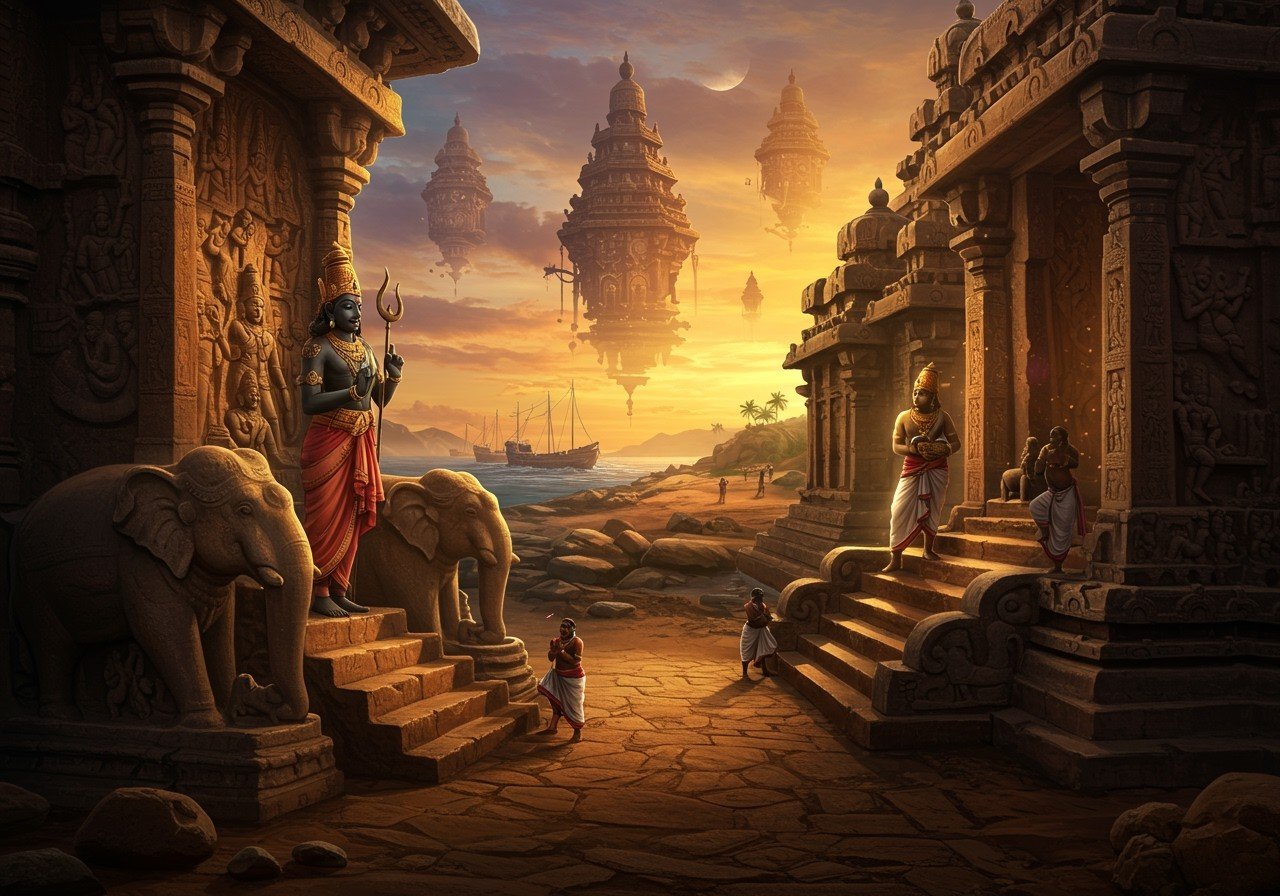
The Pallava Dynasty, a powerful South Indian kingdom, reigned from the 4th to the 9th centuries CE. Their influence significantly shaped Southern India’s cultural, artistic, and architectural landscape. This article delves into their history, providing valuable insights for UPSC aspirants seeking to understand the Pallavas’ impact on India’s rich heritage.
Origins and Rise of the Pallava Power
The Pallava Dynasty’s origins trace back to the 4th century CE in the region now known as Tamil Nadu. While their exact lineage is debated, theories suggest connections to the Chola-Naga lineage and the Satavahanas. From relatively humble beginnings, they ascended to become a major force in South India. Early rulers like Simhavishnu (late 6th century CE) consolidated their power and established the Pallava identity.
Kanchipuram, the Pallava capital, became a hub of trade and cultural exchange. Their rule fostered a blend of local traditions and Vedic culture, enriching the region’s social fabric. This blend is reflected in their art, architecture, and religious practices, making them a fascinating subject for UPSC studies.
Illustrious Rulers and Their Contributions
Simhavishnu, a key figure in Pallava history, expanded the kingdom’s territory and launched significant military campaigns. His reign marked a period of growth and consolidation for the nascent dynasty.
Mahendravarman I (7th century CE), a patron of the arts, is credited with introducing rock-cut temples, a hallmark of Pallava architecture. His support for artistic innovation left an indelible mark on the region’s cultural landscape.
Narasimhavarman I (7th century CE), also known as Mamalla, achieved military glory by defeating the Chalukyas. He commissioned the iconic Shore Temple at Mahabalipuram, a testament to Pallava architectural prowess.
Rajasimha and later rulers like Nandivarman II focused on administrative reforms and cultural development. They worked to maintain the legacy of their predecessors, ensuring the continuation of Pallava traditions and influence.
Architectural and Cultural Achievements
The Pallavas were pioneers in Dravidian temple architecture. Their rock-cut temples at Mahabalipuram, with intricate carvings and sculptures, are UNESCO World Heritage sites. The Kailasanatha Temple in Kanchipuram showcases their mastery of structural temple construction.
Beyond architecture, the Pallavas nurtured classical Tamil literature and poetry. They patronized classical dance forms like Bharatanatyam, contributing significantly to the region’s artistic heritage. Their influence extended to neighboring regions and inspired later dynasties.
Military Prowess and Diplomatic Strategies
The Pallava military was known for its strategic brilliance and naval strength. Narasimhavarman I’s victory over Chalukya king Pulakeshin II at the Battle of Vatapi highlights their military capabilities. Their naval expeditions reached Sri Lanka and Southeast Asia, demonstrating their maritime power.
The Pallavas skillfully used alliances and matrimonial ties to bolster their rule. While conflicts with the Chalukyas and Pandyas were frequent, they also maintained diplomatic relations with other kingdoms and foreign powers. Their approach to statecraft provides valuable lessons for UPSC aspirants.
Decline and Enduring Legacy
Internal conflicts, succession disputes, and persistent wars with the Chalukyas and Pandyas gradually weakened the Pallava Dynasty. The rise of the Rashtrakutas further contributed to their decline. Finally, the Cholas emerged as the dominant power in the region, marking the end of Pallava rule in the 9th century CE.
Despite their decline, the Pallavas left an enduring legacy. Their architectural marvels, like the temples at Mahabalipuram, are testaments to their artistic brilliance. Their contributions to art, literature, and culture continue to inspire and enrich South Indian traditions today.
FAQs about the Pallava Dynasty
Many wonder about the significance of Kanchipuram during the Pallava period. Kanchipuram served as the Pallava capital and a vibrant center of religious, artistic, and intellectual activity.
Another common question revolves around the religious beliefs of the Pallavas. The Pallavas were primarily patrons of Hinduism, particularly Shaivism and Vaishnavism, and their temples reflect these religious affiliations.
Poojn.in: Your Companion in Exploring Indian Heritage
Poojn.in, India’s leading online store for cultural and religious goods, offers a unique opportunity to connect with the rich heritage of the Pallava Dynasty. As you delve into their history for UPSC preparation, consider enriching your studies with authentic products that reflect the era:
-
Traditional Brass and Copper Items: Explore a collection of brass lamps (deepam) and copper kalash, reminiscent of those used in Pallava-era temples. These items can provide a tangible connection to the past and enhance your understanding of their rituals and customs.
-
Authentic Puja Items: Discover a range of incense, camphor, and other puja essentials that resonate with the religious practices prevalent during the Pallava period. Incorporating these items into your study routine can create a more immersive learning experience.
-
Educational Resources: Complement your UPSC studies with informative books and study materials on temple architecture, Hindu iconography, and South Indian temple rituals. These resources can provide valuable context and deepen your understanding of the Pallava Dynasty’s cultural contributions.
Visit Poojn.in today to explore our diverse collection and enhance your UPSC journey!
Conclusion: The Pallava Dynasty’s Significance for UPSC
The Pallava Dynasty’s history, filled with remarkable rulers, architectural wonders, and cultural achievements, is a crucial topic for UPSC aspirants. Their contributions to art, literature, and temple architecture hold significant weight in understanding India’s historical and cultural evolution. By studying the Pallavas, aspirants gain a deeper appreciation of India’s rich and diverse past.


